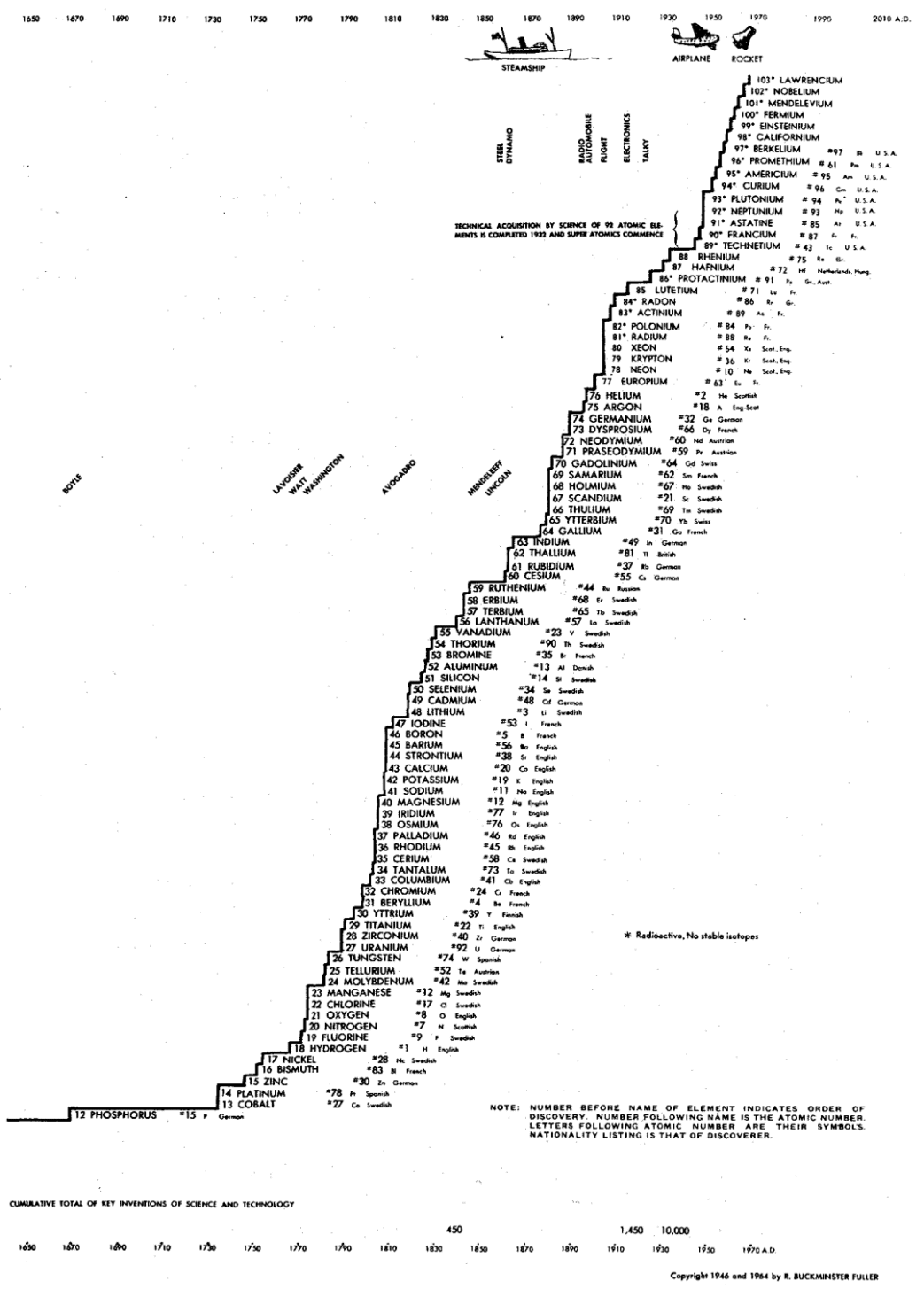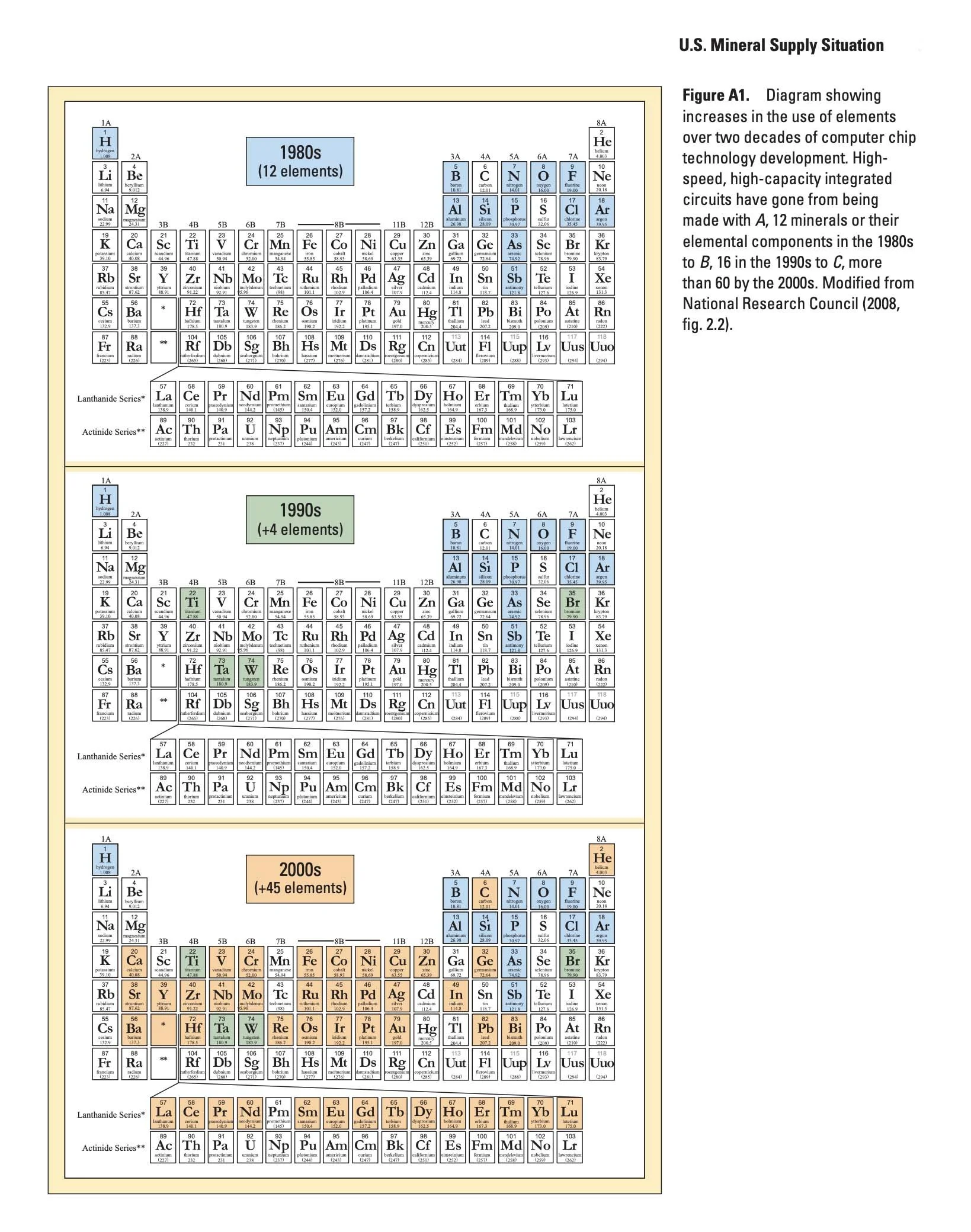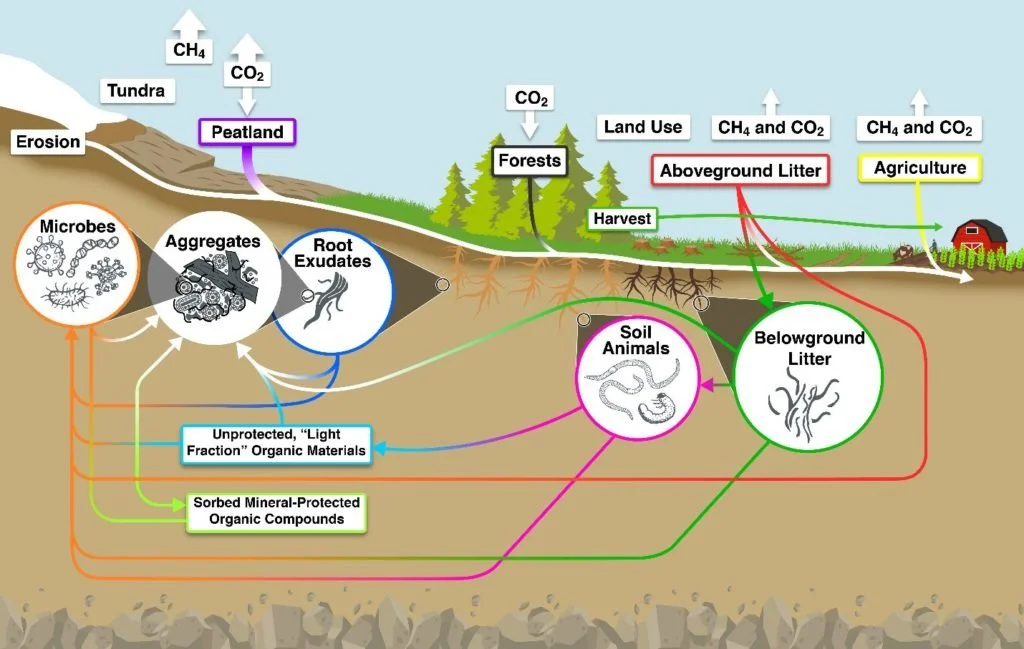World Resources
Nature’s Minimum Inventory/Maximum Diversity Toolkit
How best to assess the status of resources aboard Spaceship Earth™ and their ability to support the world population now and into the future?
We begin with the observation that the periodic table represents Nature’s minimum inventory/maximum diversity toolkit. Everything in our physical world is built from the naturally occurring elements that were forged in the interior of stars. The catch is that they are distributed unevenly around the globe. The Dymaxion perspective helps reveal current and future resource demands resulting from technology implications of geopolitical and geoeconomic developments as well as the many synergetic benefits of global collaboration and cooperation.
Photo: IRENA: Geopolitics of the Energy Transition: Critical Minerals
Welcome to the Periodic Kingdom.
“This is the kingdom of the chemical elements, the substances from which everything tangible is made. From the one hundred elements - all planets, rocks, vegetation and animals are made. These elements are the basis of the air, the oceans and the Earth itself.”
“We stand on elements, we eat elements, we are the elements.”
P.K. Atkins. Periodic Kingdom: A Journey Into The Land of The Chemical Elements
Synergy is the integrated behavior of whole systems unpredicted by the behavior of any of their parts, or the sub-assemblies of their parts in isolation. There is nothing in the individual behaviors of oxygen or hydrogen (both gases) that suggest that combining two atoms of hydrogen and one atom of oxygen (in the proper orientation) will create water. This is but one example of the creative synergetic possibilities inherent in the 92 naturally occurring elements of the periodic table.
The 92 naturally occurring chemical elements are our fundamental inventory of the components with which the universe is constructed. The periodic table displays the entire inventory of elements arranged by atomic number, electron configuration, and recurring chemical properties.
Bucky proposed compiling an Inventory of World Resources for the purpose of identifying where the critical resources can be found and in what quantities. Their identified geographic locations have generated dynamic networks of relationships, tensions and conflicts throughout history that respond to technological innovation and changing material needs.
The United States is heavily reliant on imports of certain mineral commodities vital to its national security and economy. This dependency creates strategic vulnerabilities that can play themselves out in a variety of ways including technology innovation, trade wars, public unrest and even war.
Every other country in the world finds itself in a similar situation. That’s because the world’s resources are not distributed evenly, and because we remain under the spell of a capitalist-driven world view that rewards competition over cooperation. Any vision for creating a just society has to take into account the role that resource-driven colonialism has played in world affairs throughout history.

“This present imbalance in the availability of [equitable] material advances to all is the prime aspect of our recurrent global crises. The world is clearly divided into 'have' and 'have not' peoples - as the geographically unequal distribution of physical resources becomes further sharpened by a correspondingly inequitable distribution of the knowledge, and the technology resulting from that knowledge, which transforms the physical resources of the earth into higher standards of living for man.” -Buckminster Fuller, 1964
Today, a significant percentage of mineral resources vital to national economies and for mounting a renewable energy-based response to climate change are concentrated in a few countries. Many of those are in Africa. Countries and corporations have descended upon the Democratic Republic of the Congo for example to gain control over their copper mines — a source of cobalt. Manufacturers of smartphones, electric vehicles, and wind turbines need cobalt. The relationships some have established with resource-rich countries is often characterized as a new form of colonialism. Apple sources directly from mines. China currently accounts for about 95 percent of the world’s rare earth output. They also purchase foreign mines.
See: Sourcing Rare Earths and Critical Minerals
Options for reducing an uncomfortable reliance on imported critical minerals include:
Searching for domestic sources
Recycling
Substituting materials
Developing new designs that eliminate or reduce reliance on imported minerals
Each of these options is much easier said than exercised.
Source: Fortune Magazine; 1942
The metals already scrapped from obsolete machinery and structures, which recirculate on a sum-total-of-all-metals-average every twenty-two years, are now able to do so much more work with ever less weight per each given function with each recirculation as to make the present scrap resources of almost all metals adequate to take care of all humanity’s forward needs.
Buckminster Fuller | Critical Path
Industrialized countries around the world appear locked in a competition for finite mineral supplies critical to the energy transition. Countries and companies aim to reduce supply chain risk, yet this creates another kind of risk as off take agreements and equity stakes claim critical mineral supplies for some while leaving other parties with insufficient supply to achieve their Net Zero ambitions.
Decarbonization and the voyage to Net Zero require many changes to the energy sector, including the electrification of transport and buildings. As we have discussed before, demand for critical minerals needed for this transition, such as cobalt, lithium, copper, nickel, rare earths (REEs), and graphite, is expected to rise substantially. Rising prices and competition help drive the IEA’s World Energy Outlook prediction that the critical minerals’ market will grow from $40 billion in 2020 to $280 billion by 2030 and $400 billion by 2050.
Critical Minerals In World War 2
“From one important perspective the Second World War can be viewed as an economic struggle for the control and exploitation of the world's strategic minerals. Certainly the demands of total war called forth the extraction of raw materials - wood and vegetable products - as well as minerals, from all continents on an unprecedented scale.”
Africa's Strategic Minerals During the Second World War by Raymond Dumett. The Journal of African History , 1985, Vol. 26, No. 4, World War II and Africa
“Fuller often retuned to the concept of the “alloy,” the chemical or metallurgical mixture whose properties are unforeseeable and irreducible to those discoverable in the separated states, yet which in amalgamation are able to form a new type and order of machine. Here again, capacity for action and expression is always the end product sought for by design philosophy and design science.”
Fuller Themselves | By Sanford Kwinter | ANY (Architecture New York) | No.17| ©1997
Source: A World at War; New Republic
“We’re under attack from climate change—and our only hope is to mobilize like we did in WWII.”
-Bill Mckibben
World Resource Examples













